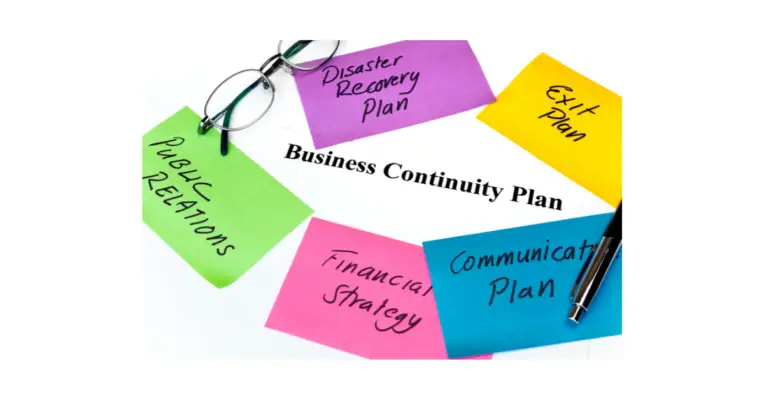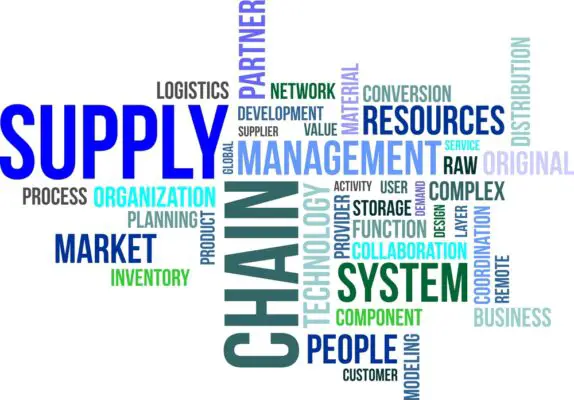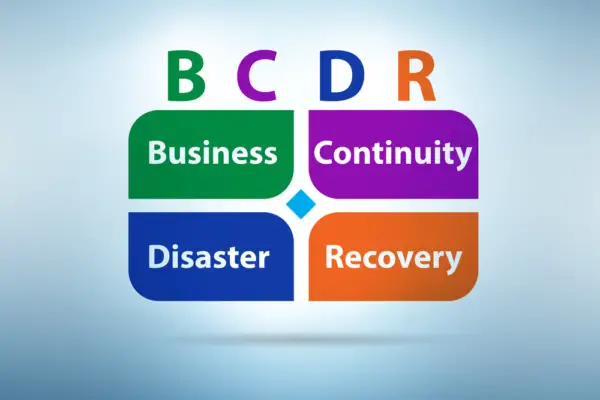A Business Continuity Plan (BCP) test scenario is a hypothetical situation used to evaluate the effectiveness of a business continuity plan.
It should be realistic and challenging, simulating an event that could potentially disrupt business operations.
When creating a test scenario, it’s important to consider the most relevant threats to the organization and design a situation that will test the plan’s critical components.
Here are some key elements to include in a BCP test scenario:
- Event Description: A detailed account of the nature of the incident, such as a natural disaster, technology failure, cyberattack, or any other critical disruption.
- Timeline: A sequence of events that outlines how the scenario unfolds.
- Impact: Specific details on how the scenario affects the business operations, such as loss of a facility, IT systems failure, or staff unavailability.
- Assumptions: Any conditions assumed to be true for the test, such as the availability of certain resources or the extent of the event’s impact.
- Objectives: Clear goals that the test is designed to achieve, such as validating communication plans, recovery time objectives (RTOs), and recovery point objectives (RPOs).
- Expected Actions: Based on the BCP, a description of the actions that participants should take in response to the scenario.
For example, a BCP test scenario might involve a simulated cyberattack that cripples the organization’s primary data center, requiring activation of disaster recovery protocols and a shift to a secondary site.
The scenario would detail the timeline of the attack, the discovery process, the response actions, and the recovery steps, including communication with stakeholders and customers.

Sources like Invenio IT provide examples of business continuity plan testing scenarios, such as data meltdowns or emergency procedures, which can be adapted to fit an organization’s specific needs.
Testing these scenarios helps identify the plan’s weaknesses and provides a learning opportunity to improve response and recovery strategies.
Documenting the test outcomes, including any issues encountered and lessons learned, is crucial to strengthen the BCP.

In today’s rapidly evolving business landscape, it is crucial for organizations to be prepared for unforeseen disruptions.
A well-tested and robust Business Continuity Plan (BCP) is essential to ensure an organization’s resilience in the face of various scenarios.
From simulated cyber attacks to natural disasters and power outages, various test scenarios can help organizations evaluate the effectiveness of their BCP.
This article will explore some of these scenarios and highlight their importance in safeguarding business operations.
With the potential for unexpected challenges lurking around every corner, ensuring the adaptability and continuity of business processes has never been more vital.
Key Takeaways
- Tabletop exercises and simulations are effective in testing and evaluating business continuity plans.
- Supply chain resilience is crucial in mitigating the impact of disruptions and maintaining productivity.
- Clear communication protocols and a designated crisis management team are essential for effective crisis management.
- Preparing for natural disasters involves establishing evacuation procedures and allocating resources for business continuity.
Tabletop Exercises
Tabletop exercises play a vital role in business continuity planning. They allow organizations to test their response strategies and identify areas for improvement.
Through various scenarios, these exercises provide a structured setting to assess the efficiency of plans and procedures.
This helps organizations enhance response preparedness and ensure a more resilient business continuity program.
Importance of Tabletop Exercises
Effective business continuity planning requires using tabletop exercises to ensure preparedness and evaluate the plan’s effectiveness.
Tabletop exercises provide a proactive approach to crisis management by simulating potential scenarios and testing communication protocols, recovery strategies, and alternative suppliers.
Through a structured discussion, key personnel can identify gaps in their business continuity plan, assess potential risks, and determine the impact on their organization.
This allows for adjustments to be made and ensures a more resilient and prepared business.
| Key Aspects | Benefits |
|---|---|
| Simulation of scenarios | Identifies gaps in the plan |
| Testing communication protocols | Ensures effective communication during a crisis |
| Evaluating recovery strategies | Determines the effectiveness of strategies |
| Assessing alternative suppliers | Identifies backup options in case of supplier failure |
| Proactive approach | Enhances preparedness for potential risks |
Benefits of Simulated Scenarios
Simulated scenarios, such as tabletop exercises, offer valuable insights into the strengths and weaknesses of a business continuity plan.
These exercises provide a controlled environment to test the plan’s effectiveness in responding to various threats, such as natural disasters or communication breakdowns.
Enhancing Response Preparedness
Organizations can utilize tabletop exercises to enhance response preparedness. These provide a controlled environment for testing and refining their business continuity plan’s effectiveness in addressing potential risks and challenges.
These exercises involve conducting simulated scenarios, such as an outage or crisis, to evaluate the plan’s effectiveness and identify gaps or improvement areas.
Through thoroughly reviewing the exercises, organizations can ensure that their business continuity plans are robust and their contacts are well-prepared to handle any downtime or disruptions.
Simulated Cyber Attack
The simulated cyber attack test scenario allows organizations to assess their attack preparation, response, and mitigation strategies.
Businesses can evaluate the effectiveness of their incident response plans and identify vulnerabilities in their systems by simulating a cyber attack.
This test also allows organizations to practice their recovery efforts and learn valuable lessons for future cyber incidents.
Attack Preparation
In preparation for a potential cyber attack, businesses must implement comprehensive measures to protect their systems and data.
Attack preparation is crucial in the face of disruptive events. This includes business continuity plan testing, focusing on critical systems, and the disaster recovery plan.
Regular testing ensures the business continuity team is prepared to handle different tests and effectively respond to the attack. These efforts aim to minimize the impact on critical components and facilitate efficient recovery.
Response and Mitigation
Effective response and mitigation strategies are essential in the face of a simulated cyber attack, allowing businesses to identify and neutralize threats while minimizing potential damage swiftly.
Key elements to consider in response and mitigation include:
- Plan review.
- Ensuring that personnel are trained and prepared to respond.
- Establishing effective internal communications.
- Utilizing alternative communication channels.
- Activating a dedicated recovery team.
Additionally, backup systems should be in place and regularly tested, and corrective actions should be taken based on strategic tests and assessments.
Recovery and Lessons
After successfully implementing response and mitigation strategies, the next crucial step is to focus on the recovery and lessons learned from a simulated cyber attack. .This phase involves assessing the extent of the outage, restoring services, and minimizing operational downtime.
Supply Chain Disruption
Supply chain disruption can significantly impact production, leading to delays and potential revenue loss. In such situations, it is crucial for businesses to explore alternative sourcing options to mitigate the impact and ensure continuity.
Effective communication with stakeholders, including customers and suppliers, is essential to manage expectations and maintain relationships during supply chain disruptions.

Impact on Production
The disruption of the supply chain causes a significant impact on the production process.
- Outages in the supply chain can halt production operations.
- A lack of raw materials and components can lead to delays and decreased productivity.
- Failure to implement proper disaster recovery procedures and plans can exacerbate the impact.
- Potential risks include increased costs, reduced customer satisfaction, and loss of market share.
- An effective emergency communication strategy and identification of critical services are crucial. Backup office locations can help mitigate the impact.
Alternative Sourcing Options
To mitigate the impact of supply chain disruptions, exploring alternative sourcing options is essential for maintaining business continuity.
This involves identifying backup suppliers, conducting supplier evaluations, and developing contingency plans to ensure supply chain resilience.
Testing these alternative sourcing options through business impact analysis is crucial for risk mitigation. Organizations can minimize the negative effects of supply chain disruption by having a comprehensive business continuity plan that includes alternative sourcing options.
| Alternative Sourcing Options | Supplier Evaluation | Contingency Plans |
|---|---|---|
| Identify backup suppliers | Assess supplier capabilities and reliability | Develop plans to switch to alternative suppliers |
| Diversify supplier base | Evaluate supplier financial stability | Establish communication protocols with backup suppliers |
| Establish strategic partnerships | Monitor supplier performance | Implement regular supplier performance reviews |
| Implement dual sourcing strategy | Evaluate supplier risk exposure | Conduct supply chain risk assessments |
| Develop local sourcing options | Analyze supplier capacity and scalability | Collaborate with suppliers to enhance supply chain resilience |
Communication With Stakeholders
Effective communication with stakeholders is crucial during a supply chain disruption. To ensure smooth communication, businesses must establish clear communication protocols and designate a crisis management team responsible for coordinating and disseminating information.
Regular client communications should be prioritized, emergency procedures should be in place, and an emergency contact for stakeholders.
Attention to communication is vital to minimize the business impact of the disruption. Response processes and key components should be well-defined to ensure an acceptable downtime.
Natural Disaster Scenario
When it comes to preparing for a natural disaster scenario, businesses must consider several key points.
Firstly, having well-defined evacuation procedures in place can help ensure the safety of employees and minimize potential risks.
Secondly, establishing efficient emergency communication channels is crucial for timely updates and coordination during a crisis.
Lastly, setting recovery time objectives enables organizations to plan and allocate resources effectively, minimizing downtime and ensuring business continuity.
Evacuation Procedures
During a natural disaster, it is crucial for businesses to have well-established evacuation procedures in place. To ensure a successful business continuity plan test scenario, organizations must prioritize developing and implementing effective evacuation procedures.
Key elements to consider include:
- conducting regular evacuation drills,
- outlining clear emergency procedures,
- establishing emergency response teams,
- providing training on emergency evacuation techniques and
- integrating evacuation procedures into overall crisis management and disaster recovery plans.
Emergency Communication Channels
Organizations must establish reliable communication channels to coordinate and disseminate information during a natural disaster scenario effectively.
These emergency communication channels are crucial when network outages, bomb threats, or other events disrupt regular communication channels.
Phone calls and other communication protocols should be included in the business continuity strategy. A comprehensive business continuity plan should also outline the recovery skills required to activate these channels.
Regularly reviewing and updating contact details is essential to ensure accuracy and effectiveness during emergencies.
Recovery Time Objectives
Organizations must establish recovery time objectives in a natural disaster scenario to determine the maximum acceptable downtime for critical business operations.
Businesses can employ various methods such as tabletop tests, full-scale exercises, and limited-scale exercises to effectively test these objectives.
These tests allow organizations to assess their business continuity plans, identify weaknesses, and make necessary improvements.
It is crucial for businesses to conduct actual exercises regularly to ensure preparedness and minimize the risk of backup recovery failures.
Power Outage Simulation
The power outage simulation is an essential test scenario for assessing the impact on operations, identifying mitigation strategies, and evaluating the effectiveness of the communication plan.
During this simulation, it is crucial to analyze how the loss of power affects critical systems, such as servers and data centers, and develop strategies to minimize disruption.
Additionally, an efficient communication plan should be in place to ensure timely updates to employees, clients, and stakeholders during a power outage.
Impact on Operations
During a power outage simulation, businesses may experience significant disruptions to their operations. This highlights the importance of having a robust business continuity plan in place. The impact on operations can include:
- Inability to access electronic systems and data.
- Disrupted communication channels between offices and staff.
- Delays in critical actions and decision-making processes.
- Loss of productivity and revenue.
- Increased risk of potential threats and crises.
Testing the business continuity plan templates is crucial to identify weaknesses and enhance risk management strategies.
Mitigation Strategies
To effectively manage the impact of a power outage simulation on operations, businesses must implement mitigation strategies as part of their business continuity plan.
These strategies should include developing action plans in collaboration with business leaders and key suppliers, ensuring the availability of backup generators, and establishing communication protocols.
Additionally, senior management should anticipate potential challenges such as transportation blockages and public health crises.

Communication Plan
Effective communication is crucial during a power outage simulation to ensure seamless coordination and timely dissemination of information. To achieve this, the communication plan should include the following elements:
- Clear communication protocols outline the process for reporting and escalating issues.
- Up-to-date contact information for all personnel involved in the simulation.
- An alert contact list includes critical personnel who must be informed immediately.
- Identification of the team responsible for communication during the simulation.
- Contact information for the business owner and service providers for additional support.
Conclusion
During a crisis, effective leadership is crucial. Crisis management and business continuity planning are strategic processes that play a critical role in minimizing the impact of potential risks and threats.
Testing a business continuity plan (BCP) is of utmost importance in ensuring its effectiveness and the organization’s ability to withstand potential disruptions.
The report should be concise, and clear, and provide relevant information to support decision-making and improvement of the plan.
It is essential to assess the BCP’s effectiveness, identify any gaps or weaknesses, and make necessary improvements to enhance the organization’s preparedness for unforeseen events.
Organizations can maintain business operations by regularly testing and reviewing their plans to handle potential disruptions.

Chris Ekai is a Risk Management expert with over 10 years of experience in the field. He has a Master’s(MSc) degree in Risk Management from University of Portsmouth and is a CPA and Finance professional. He currently works as a Content Manager at Risk Publishing, writing about Enterprise Risk Management, Business Continuity Management and Project Management.

